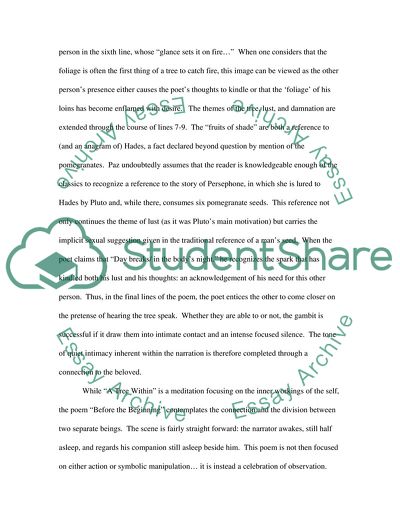The Community of the Individual: An Analysis of the Poetry of Octavio Paz Essay Example | Topics and Well Written Essays - 1750 words. https://studentshare.org/literature/1703851-octavio-paz
The Community of the Individual: An Analysis of the Poetry of Octavio Paz Essay Example | Topics and Well Written Essays - 1750 Words. https://studentshare.org/literature/1703851-octavio-paz.


